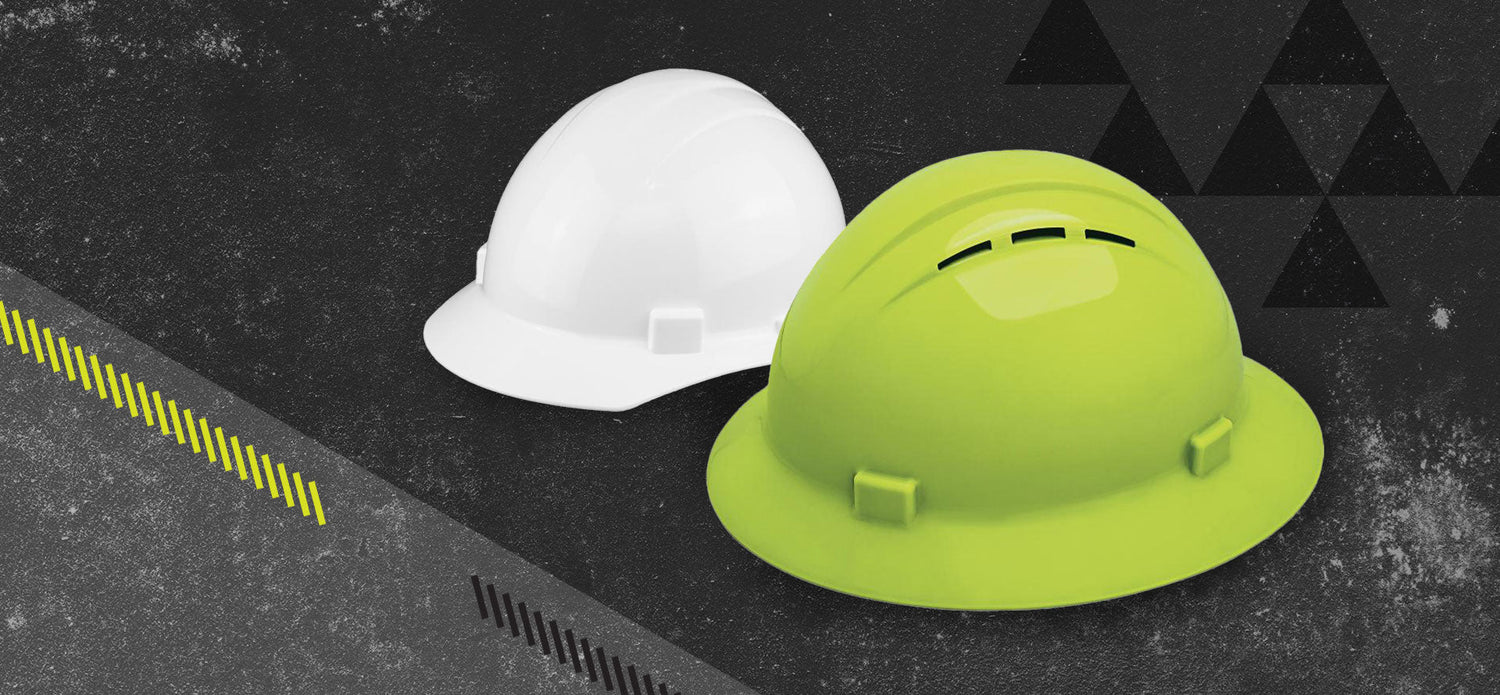Hard hats are essential protective gear in high-risk work environments where safety is paramount. Whether working on a construction site, manufacturing facility, or electrical site, wearing the right hard hat (according to hard hat types and classes) can mean the difference between safety and serious injury. However, not all high-visibility hard hats are created equal. Understanding the different types and classes of hard hats is crucial for selecting the right one for your needs.
The Importance of Hard Hats
Hard hats are more than just a requirement on many job sites—they are a critical element of personal protective equipment (PPE) designed to keep workers safe from serious injuries. The primary function of a hard hat is to shield the wearer from impacts, whether from falling objects, debris, or accidental bumps against hard surfaces. These dangers are a daily reality in industries like construction, manufacturing, and utilities, making hard hats indispensable.
However, protection from impacts is just one aspect of what hard hats offer. Many are also designed to protect against electrical hazards, which is vital for working in environments where contact with live wires or electrical components is risky. By absorbing and deflecting the force of an impact or protecting against electrical shock, hard hats are crucial in reducing the risk of head injuries, which can be life-threatening or lead to long-term disabilities.
Hard Hat Types
When selecting a hard hat, it's essential to understand the different types available, as classified by the American National Standards Institute (ANSI) under the ANSI Z89.1 standard. This standard divides hard hats into two primary types, each designed to offer specific protection based on the hazards present in the work environment.
Type I Hard Hats
Type I hard hats are designed to protect the wearer from impacts to the top of the head. They feature a full brim that encircles the entire hat. The full brim deflects falling objects away from the head, protecting against them. Type I hard hats are primarily used in environments where the main risk comes from above, such as falling tools or debris.
Common Uses: Type I hard hats are widely used in construction, manufacturing, and other industries where overhead hazards are prevalent. The full-brim design also protects against elements like sun and rain, making them a good choice for outdoor work.
Type II Hard Hats
Type II hard hats provide more comprehensive protection, safeguarding the wearer from both top impacts and lateral (side) impacts. Unlike Type I hard hats, Type II models have a short brim only in the front, allowing for better visibility while offering protection. These hard hats are specifically designed to protect against blows to the front, back, sides, and top of the head. Type II hard hats undergo rigorous testing for off-center penetration resistance and chin strap retention to ensure they provide robust protection from multiple angles.
Common Uses: Type II hard hats are commonly found in utility work, logging, and other high-risk industries where workers may be exposed to side impacts, such as swinging equipment, tools, or moving machinery. Due to their versatility and enhanced protective features, they are the most commonly used hard hats.
Classes of Hard Hats
In addition to understanding the different types of hard hats, it's also important to be aware of the various classes of hard hats, which are defined based on the level of electrical protection they provide. The American National Standards Institute (ANSI) classifies hard hats into three distinct classes: Class G, Class E, and Class C.
Class G (General)
Class G hard hats, also known as General hard hats, are designed to provide protection against impact and penetration and limited protection against electrical hazards. They are rated to protect against electrical currents up to 2,200 volts. While they offer some electrical protection, they primarily safeguard against falling objects and other impacts.
Common Uses: Class G hard hats are commonly used in general construction, mining, and other industries with a moderate risk of electrical exposure. They are a good choice for workers who need both impact protection and some level of electrical insulation.
Class E (Electrical)
Class E or Electrical hard hats provide the highest level of protection against electrical hazards. These hard hats are tested to withstand up to 20,000 volts, making them ideal for work environments where exposure to high-voltage electricity is a significant concern. In addition to electrical protection, Class E hard hats also offer robust impact and penetration resistance.
Common Uses: Class E hard hats are essential for electricians, linemen, and utility workers who regularly work near or with high-voltage electrical equipment. Their superior electrical insulation makes them indispensable in these high-risk environments.
Class C (Conductive)
Class C or Conductive hard hats differ from the other two classes in that they do not provide any electrical protection. These hard hats are designed solely for impact protection, making them suitable for environments where electrical hazards are not a concern. Class C hats are often vented hard hats made from materials that allow for better ventilation, such as aluminum, making them more comfortable to wear in hot conditions.
Common Uses: Class C hard hats are used when electrical hazards are not present, such as roadwork, manufacturing, and other industrial settings. They are favored for their lightweight design and breathability, making them a comfortable option for workers in physically demanding roles.
In addition to their physical protection, hard hats are a visible reminder of safety protocols and standards on the job site. Their presence reinforces the safety culture, ensuring that all workers remain aware of the potential hazards around them and are committed to following best practices to prevent accidents. Hard hat accessories can also be added for extra sun protection and reflectivity.







